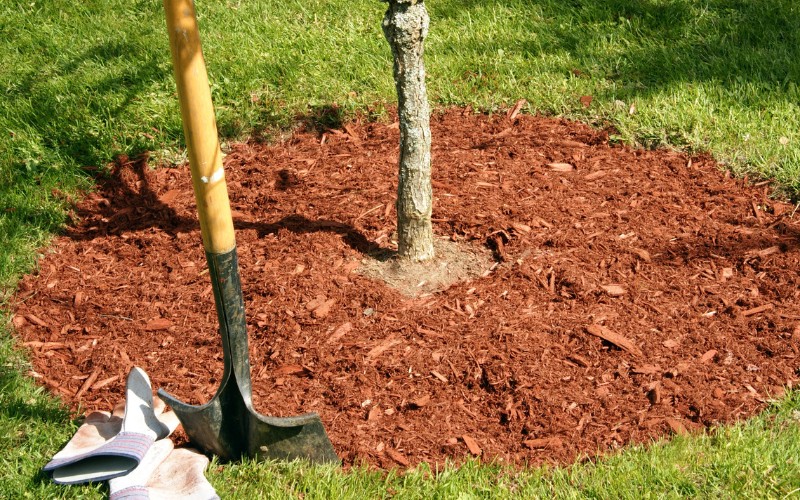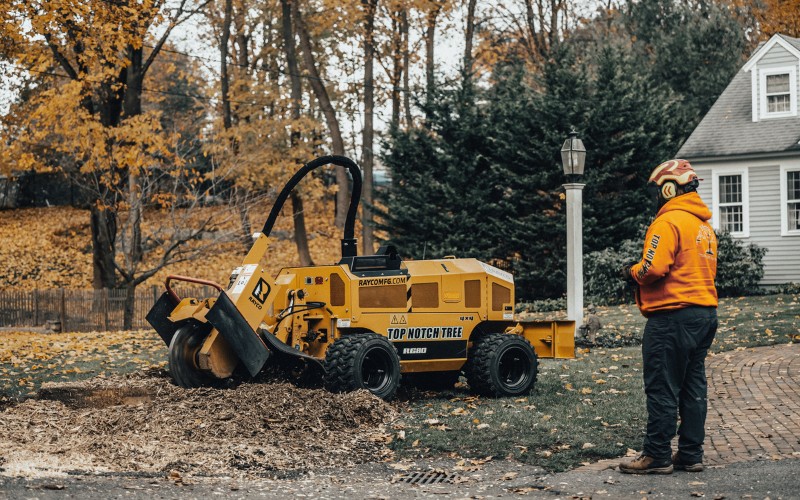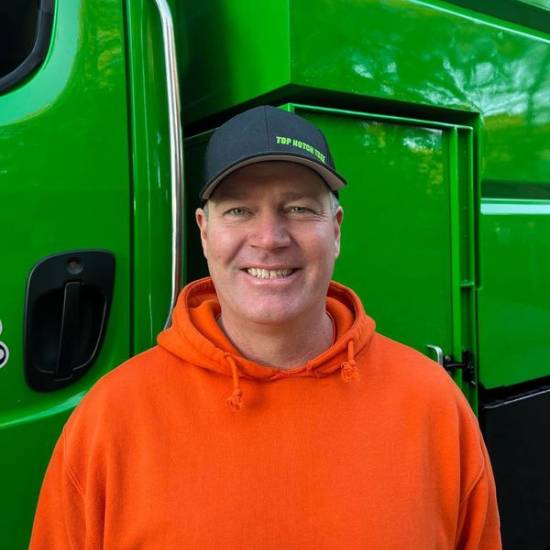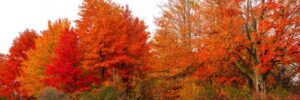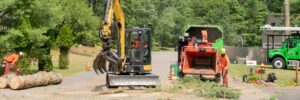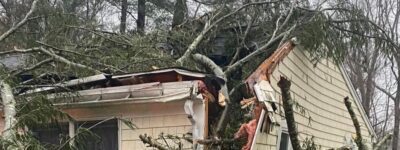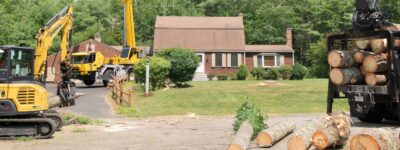After stump grinding, your yard probably feels like a blank state. Much like an artist staring at a white canvas, you’re likely eager to get started on making the most of the new space. If you’re considering planting a tree in the same spot, it’s important to understand the challenges involved.
Learn more about the difficulties of planting a tree after stump grinding and how you can give the new sapling the best chance to survive.
Key Takeaways:
- After stump grinding, it’s generally not advisable to plant a new tree in the same spot immediately because of remaining roots, potential soil diseases, depleted nutrients, and site conditions.
- Roots typically take 5-10 years to decompose after stump grinding, with softwood trees decomposing faster than hardwoods.
- If you must plant in the same location, wait a few years, plant a different species, improve the soil quality, and consider planting slightly away from the original stump site.
- Alternative options for the area after stump grinding include leaving it empty for grass, adding hardscaping and decorations, or planting a flowerbed.
Frequently Asked Questions About Replanting a Tree After Stump Grinding
To help you determine the best course of action after stump grinding on the South Shore, we’ve compiled a list of common questions from our customers. We hope that answering them will help you understand the feasibility of planting a tree where an old one used to be.
Can I replant a tree in the extract same spot after stump grinding?
While you technically can plant a tree in the same spot, it’s often not advisable. Even though we grind stumps to about 10 to 12 below the surface, there will still be remains of the wood and roots underground.
The remaining material in the soil will restrict a tree’s ability to spread its roots and establish itself. The new sapling will have to compete with the remnants of the old one for space.
Other than remaining roots, what are other concerns with replanting in the same space?
Roots are not the only problem when you try to replant a tree after stump grinding. Some of the other concerns include:
- Diseases in the Soil: If you had to replace the tree due to a disease, the soil may still contain the fungi that caused it. Planting another specimen in the same place will put it in danger of being killed by the same problem.
- Depleted Nutrients: Our South Shore soils are often nutrient-poor, and a mature tree can deplete these nutrients over time. Without adding organic matter or fertilizer, the soil may lack the essential nutrients, especially nitrogen, needed to support a new tree.
- Site Conditions: You may have had to remove the tree due to problems like poor drainage in the soil or a lack of sunlight. Immediately planting a new tree will cause it to face the same issues.
- Leftover Woodchips: We will use a combination of soil and woodchips to fill in the hole left over from stump grinding. While the woodchips will eventually decompose, it will take time and will limit a tree’s ability to spread its roots.
How long does it take for the previous roots to decompose?
While tree roots will remain throughout your soil after stump grinding, they will not last forever. In general, it takes roots anywhere from 5-10 years to decompose after stump grinding. The time it takes will depend on the tree species (as softwoods take less time to decompose than hardwoods).
Will my tree die if I plant it in the same place immediately after stump grinding?
Whether your tree will survive depends on several factors, including its species and the condition of your soil. Your tree may be able to survive, but you will have to put more work into it than with a sapling planted away from where a stump previously stood.
What should I do if the tree has to be planted in the same place?
If you have to plant in the same location for landscaping reasons, there are a few tips to follow to give your tree the best chance to survive:
- Wait a Few Years: Waiting a few years, at least one or two, before planting will allow enough of the roots to decompose to make space for the new tree.
- Plant a Different Species: If insects or disease problems necessitated the removal of the original tree, do not plant the same species again. The problems may persist in the soil and lead to the new sapling dying similarly. To counteract this problem, plant a different species.
- Improve the Soil: Before planting, conduct a soil test to assess the quality of your soil. Adding organic matter and fertilizer can improve nutrient deficiencies. Additionally, clear out any remaining stump grindings in the planting site. If you see any visible roots, attempt to remove them to give the new roots space to expand.
- Plant Slightly Away from Stump Site: You can plant a new tree around three feet from the stump location. While there will still be roots there, they won’t be as thick, and your tree will have room to establish itself.
What are some alternatives to planting a tree in the area after stump grinding?
Instead of planting a tree after stump grinding, there are alternative options. Some alternatives include:
- Leave it Empty: Growing grass and using the area for outdoor activities is perfect for homeowners with children, as it gives them space to play in your yard.
- Add Hardscaping and Decorations: Underground roots won’t bother above-ground decorations and hardscaping. You can use the hardscape as space for a grill or outdoor seating area.
- Plant a Flowerbed: Flowers do not have the same extensive and woody root systems as trees, so they won’t be bothered by any remaining roots. A flowerbed brings plenty of visual appeal to your yard and is a good replacement for a tree.
Top Notch Tree Can Handle Stump Grinding on the South Shore
Stump grinding can be a challenge when someone who isn’t a professional handles it. They may not grind the stump deep enough to allow you to use the space properly or tear up your yard during the process.
Our team at Top Notch Tree grinds stumps deeper than most companies, making it easier to grow a tree after stump grinding or use the space for landscaping. If you’ve had a tree removed or have a stump that’s an eyesore on your property, we can help. Call us today at 781-871-8008 or request an estimate online.

